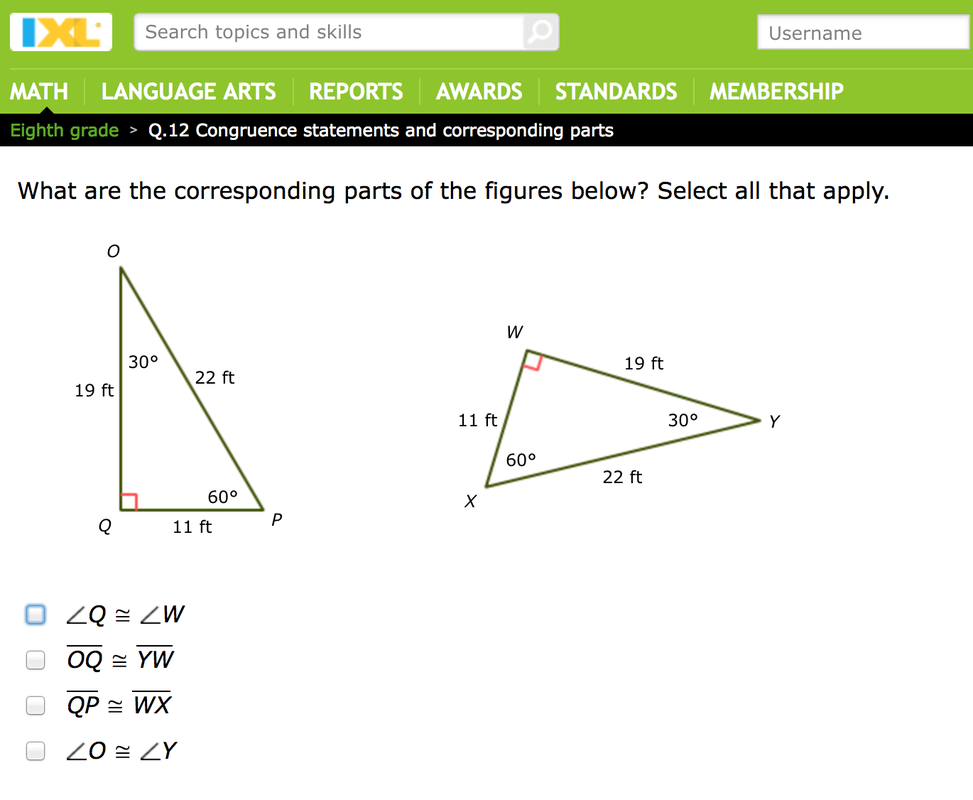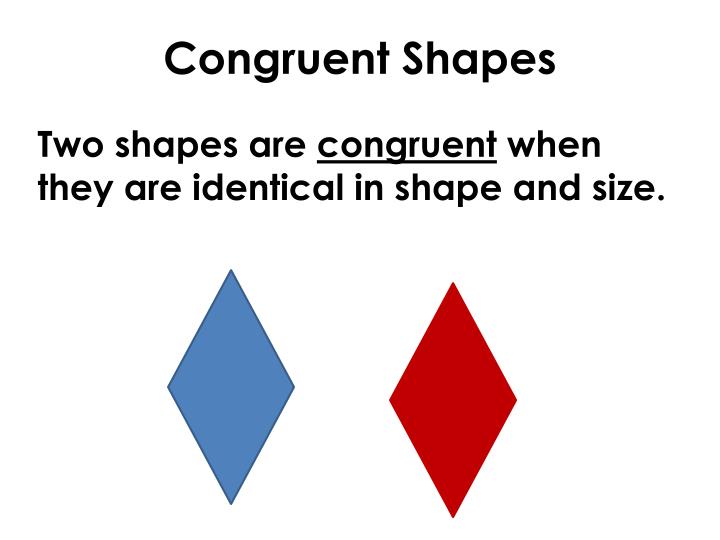

In a Euclidean system, congruence is fundamental it is the counterpart of equality for numbers.There are many theorems based on congruent angles. For example, if two triangles have been shown to be congruent by the SSS criteria and a statement that corresponding angles are congruent is needed in a proof, then CPCTC may be used as a justification of this statement.Ī related theorem is CPCFC, in which "triangles" is replaced with "figures" so that the theorem applies to any pair of polygons or polyhedrons that are congruent.ĭefinition of congruence in analytic geometry The statement is often used as a justification in elementary geometry proofs when a conclusion of the congruence of parts of two triangles is needed after the congruence of the triangles has been established. Symbolically, we write the congruency and incongruency of two triangles △ ABC and △ A′B′C′ as follows:Ī B C ≅ A ′ B ′ C ′ Two triangles are congruent if their corresponding sides are equal in length, and their corresponding angles are equal in measure. If at any time the step cannot be completed, the polygons are not congruent. Fourth, reflect the rotated figure about this matched side until the figures match.


The word equal is often used in place of congruent for these objects. In elementary geometry the word congruent is often used as follows. Note hatch marks are used here to show angle and side equalities. This diagram illustrates the geometric principle of angle-angle-side triangle congruence: given triangle ABC and triangle A'B'C', triangle ABC is congruent with triangle A'B'C' if and only if: angle CAB is congruent with angle C'A'B', and angle ABC is congruent with angle A'B'C', and BC is congruent with B'C'. Therefore two distinct plane figures on a piece of paper are congruent if they can be cut out and then matched up completely. This means that either object can be repositioned and reflected (but not resized) so as to coincide precisely with the other object. More formally, two sets of points are called congruent if, and only if, one can be transformed into the other by an isometry, i.e., a combination of rigid motions, namely a translation, a rotation, and a reflection. In geometry, two figures or objects are congruent if they have the same shape and size, or if one has the same shape and size as the mirror image of the other. The unchanged properties are called invariants. Congruence permits alteration of some properties, such as location and orientation, but leaves others unchanged, like distances and angles. The last triangle is neither congruent nor similar to any of the others. The two triangles on the left are congruent, while the third is similar to them.

Relationship between two figures of the same shape and size, or mirroring each otherĪn example of congruence.


 0 kommentar(er)
0 kommentar(er)
